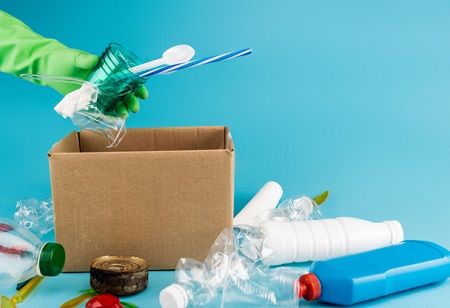Janifha Evangeline, Assistant Editor, India Pharma Outlook

A few months ago, lawmakers in Europe signed off on an update to the urban waste water treatment directive and this was to tighten the restrictions on pollution further. New EU rules that introduce “polluter pays” principles for getting pharmaceutical & cosmetic firms to pay for the pollution they cause in rivers will not be adopted by the government in England.
When drugs and their metabolism enter the environment through numerous pathways pharmaceutical pollution occurs. These comprise improper disposal of unused medication, industrial waste from pharmaceutical manufacturing plants & agricultural runoff. These substances can persist for long periods, once they are in the environment as numerous pharmaceuticals are designed to be stable & resist degradation as well.
The scope of this problem is global, for example, a study published in the year 2018, stated that pharmaceutical residues were found in the rivers across seventy-one countries and this affected the water supply of almost five billion people across these countries. Hence, this widespread contamination was not limited to a single country or region but it was a universal challenge. Let us look at some of the real-time examples of pharmaceutical pollution in this article.
One of the most alarming cases of pharmaceutical pollution includes the contamination of water sources and water bodies in our country specifically near the pharma manufacturing locations. For instance, researches discovered extremely high concentrations of drugs which include painkillers, antihypertensives as well as antibiotics in the local lakes and rivers of the city of Patancheru which is one of the major center for pharmaceutical manufacturing.
A 2007 study stated that the concentration of ciprofloxacin (a common antibiotic) was thirty one thousand times higher than the usual levels found in a typical sewage treatment plant in the US. This contamination contributes to the rise of antibiotic-resistant bacteria which not only affects local ecosystem but is also a global public threat.
While pharmaceutical pollution has profound effects on ecosystems, it has a huge effect on the aquatic life. As water bodies often serve as the final repository for these contaminants, aquatic life is specifically vulnerable. According to studies, the exposure to pharmaceuticals can lead to disruption of the behavior, growth as well as reproduction process of the aquatic organisms. For instance, male fish that was exposed to the synthetic estrogen which is used in birth control pills developed female characteristics and this has led to a huge decline in the fish populations in affected regions in Canada. Researchers in the United Kingdom have discovered that antidepressants in rivers can alter the behavior of shrimp which makes them more likely to be preyed upon.
Pharmaceuticals can accumulate in the soil and this affects the terrestrial organisms & potentially entering the food chain. For instance, crops which are grown using contaminated water may absorb these chemicals and these crops can be consumed by humans as well
as animals. While the concentrations of these pharmaceuticals are generally low in food, the long-term effects of chronic exposure are still not well understood.
The potential health risks cannot be ignored although the concentrations of pharmaceuticals that are found in drinking water are usually low. Continuous exposure to low levels of drug would contribute to adverse health effects over time. And this will affect the health of children, pregnant women and individuals with compromised immune systems. Furthermore, the presence of antibiotics in the environment can lead to development of antibiotic-resistant bacteria and this pose a huge threat to the global health.
One such instance is the surge in antibiotic resistance in the country, where pharma pollution from production facilities has been linked to the proliferation of drug-resistant bacteria in the environment and these bacteria can spread to humans via contaminated food or contaminated water and these lead to infections which are increasingly difficult to treat. Antibiotic resistance has been identified by WHO as one of the biggest threats to global health and one of the major factors contributing to this is pharmaceutical pollution.
Ramanan Laxminarayanan, founder and president of One Health Trust explains, “Many pharmaceutical companies that manufacture antibiotics don’t treat the effluent which means that the effluent coming out from the industrial plant contains antibiotics.”
“These antibiotics then make their way into natural water bodies…and when they are in these lakes and ponds, they are killing off sensitive bacteria, and they are allowing only resistant bacteria to survive, which then means that we are creating antibiotic resistance in natural reservoirs. So, clearly this is not a sustainable practice because the manufacture of antibiotics is itself contributing to the destruction of the curing ability of antibiotics,” he adds.
It requires a multifaceted approach for addressing pharmaceutical pollution. A key strategy is to effectively removing pharmaceuticals from effluents prior to reaching the environment is to improve wastewater treatment technologies. Although, advanced oxidation processes, activated carbon adsorption are a few of the promising technologies that are being explored, these can be expensive and energy intensive.
“To address pharmaceutical pollution, several initiatives have been introduced. The National Action Plan for Antimicrobial Resistance 2017 aims to limit antibiotics in industrial waste. Additionally, the Central Pollution Control Board (CPCB) has issued guidelines for achieving zero liquid discharge in the industry. Future sustainability efforts must also focus on public education, awareness, and perceptions regarding pharmaceutical pollution,” says Srivardhan Khemka, Director of Sanjivani Paranteral.
Pharmaceutical is a hidden crisis that needs urgent attention since the usage of pharmaceuticals continues to surge so does the potential for environmental contamination & its associated risks to the ecosystem and human health. We can mitigate the impact of pharmaceutical pollution & protect our environment through better waste management practices through the implementation of better waste management practice, advancing treatment technologies and increasing awareness.